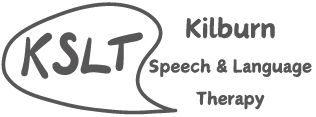Understanding Speech and Language Therapy: What to Expect and How It Works
If you would like to see a simplified version of this page, CLICK HERE
Please note that this is intended as general information about speech and language therapy.
Speech and language therapy is a specialised field aimed at helping individuals with communication difficulties and swallowing difficulties. Whether someone struggles with speech, language, voice, or swallowing disorders, speech and language therapists, (also known as “speech-language pathologists” in other parts of the world), are trained to assess, diagnose, and treat a wide range of communication and swallowing challenges.
What is Speech and Language Therapy?
Speech and language therapy involves a tailored approach to address individual needs. Therapeutic work might focus on speech sounds, language comprehension, using language expressively, social communication skills, conversation skills, using specific strategies, alternative and augmentative communication (AAC), voice quality, fluency, and swallowing abilities. Speech and language therapy is not just about correcting pronunciation (a common misconception!); it encompasses various aspects of communication or swallowing to enhance overall quality of life, and it is tailored to individual needs.
Who Needs Speech and Language Therapy?
Speech and language therapy benefits people of all ages, from infants to older adults. Here are some common reasons why individuals might seek speech and language therapy:
Children:
Speech delays, articulation disorders, language delays, language disorders, stammering/dysfluency, cerebral palsy, learning disabilities, autism, voice disorders, or difficulties with feeding and swallowing.
Adults:
Stroke; traumatic brain injury; brain tumours; Parkinson’s disease; Motor Neurone Disease; Multiple Sclerosis, Huntington’s Disease; dementia; voice disorders; stammering/dysfluency; autism; learning disabilities; communication or swallowing difficulties due to surgery or cancer.
What to Expect During Speech and Language Therapy Sessions
1. Assessment: The first step involves a comprehensive evaluation by the speech and language therapist to determine the individual’s strengths, weaknesses, and specific communication or swallowing goals.
2. Goal Setting: Based on the assessment, the speech and language therapist and the individual (or their carers) collaboratively set achievable goals tailored to the needs and aspirations of the individual.
3. Therapeutic Techniques: Therapy sessions may include various different types of work depending on the goals set, such as articulation techniques, language exercises, voice exercises, role-playing, alternative and augmentative communication (AAC) strategies, working with a conversation partner, and cognitive communication activities. Swallowing therapy may include specific advice on diet modification, postures and strategies for safer swallowing.
4. Progress Tracking: Regular progress monitoring helps to track changes or improvements and to adjust therapy plans accordingly.
5. Home Practice: Practising specific exercises or strategies between therapy sessions is crucial for maximising progress. The speech and language therapist can provide recommendations for continued practice outside of sessions. This may be for the individual, for those supporting the individual, or both.
The Role of the Speech and Language Therapist
SLTs play a multifaceted role in the therapy process:
- Diagnosticians: They assess and diagnose communication and swallowing disorders and determine the appropriate course of treatment or support.
- Educators: They educate individuals and their families/carers about their communication and swallowing diagnoses, as well as how best to manage these.
- Advocators: SLTs often advocate for their clients, ensuring they can access the necessary resources and accommodations to support their communication and swallowing needs in various settings.
- Collaborators: SLTs often work closely with other healthcare professionals, educators, and professional services to provide holistic care and support.
In Conclusion
Speech and language therapy is a dynamic process that empowers individuals to overcome communication barriers and manage eating drinking and swallowing difficulties and reach their full potential. By understanding what to expect and actively participating in the therapy process, individuals can make significant strides in improving their communication skills and enhancing their quality of life. If you or someone you know could benefit from speech and language therapy, don’t hesitate to contact a fully qualified speech and language therapist for guidance and support. Please ensure that your therapist is registered with the Health and Care Professions Council (in the United Kingdom). This can be done by searching via check the HCPC register
Independent speech and language therapists in the UK can be found by searching the Association of Speech and Language Therapists in Independent Practice (ASLTIP) here: find a registered independent speech therapist
